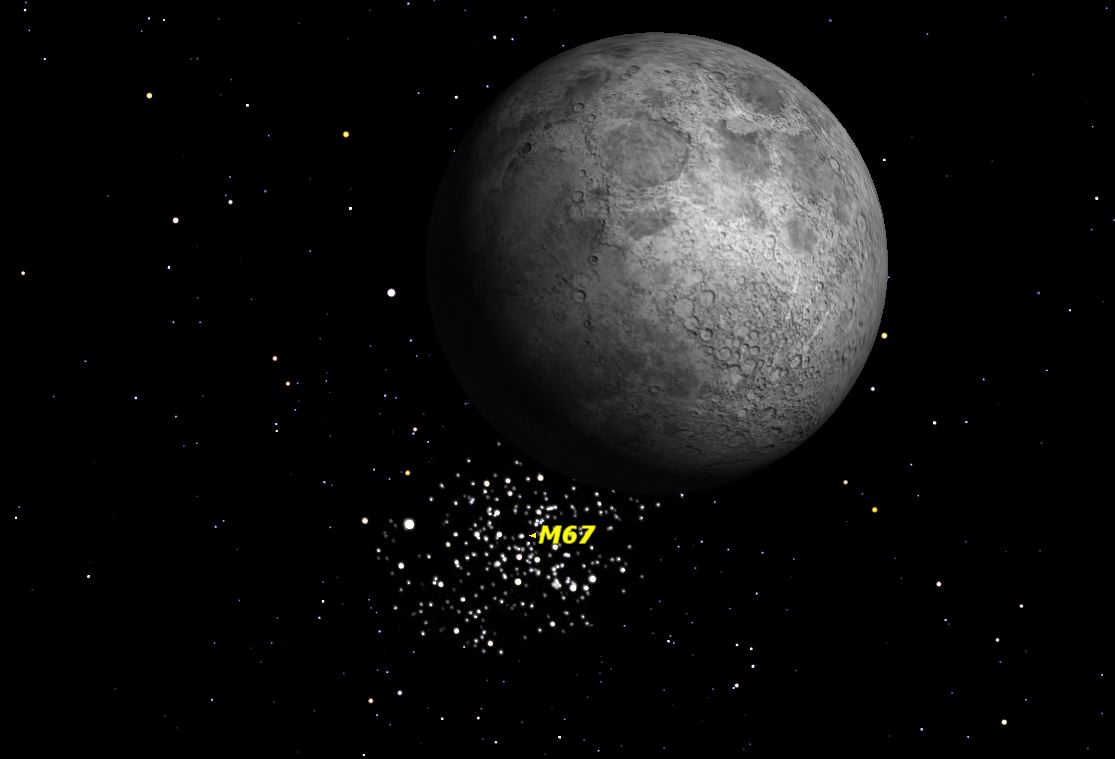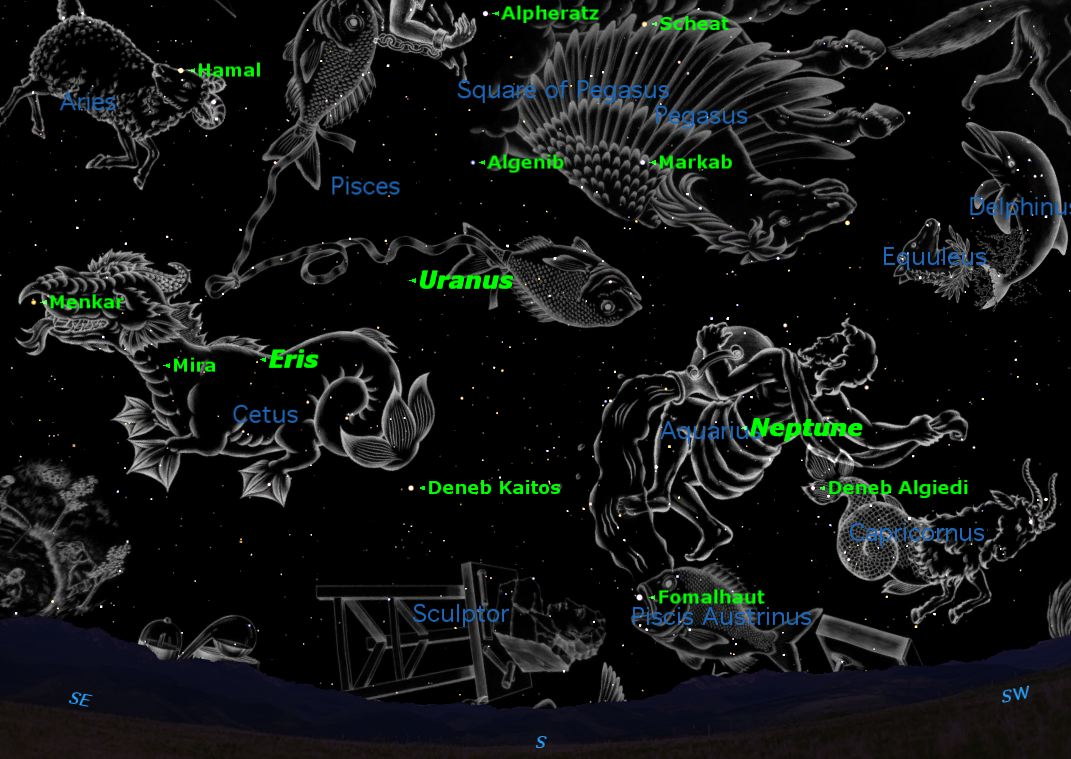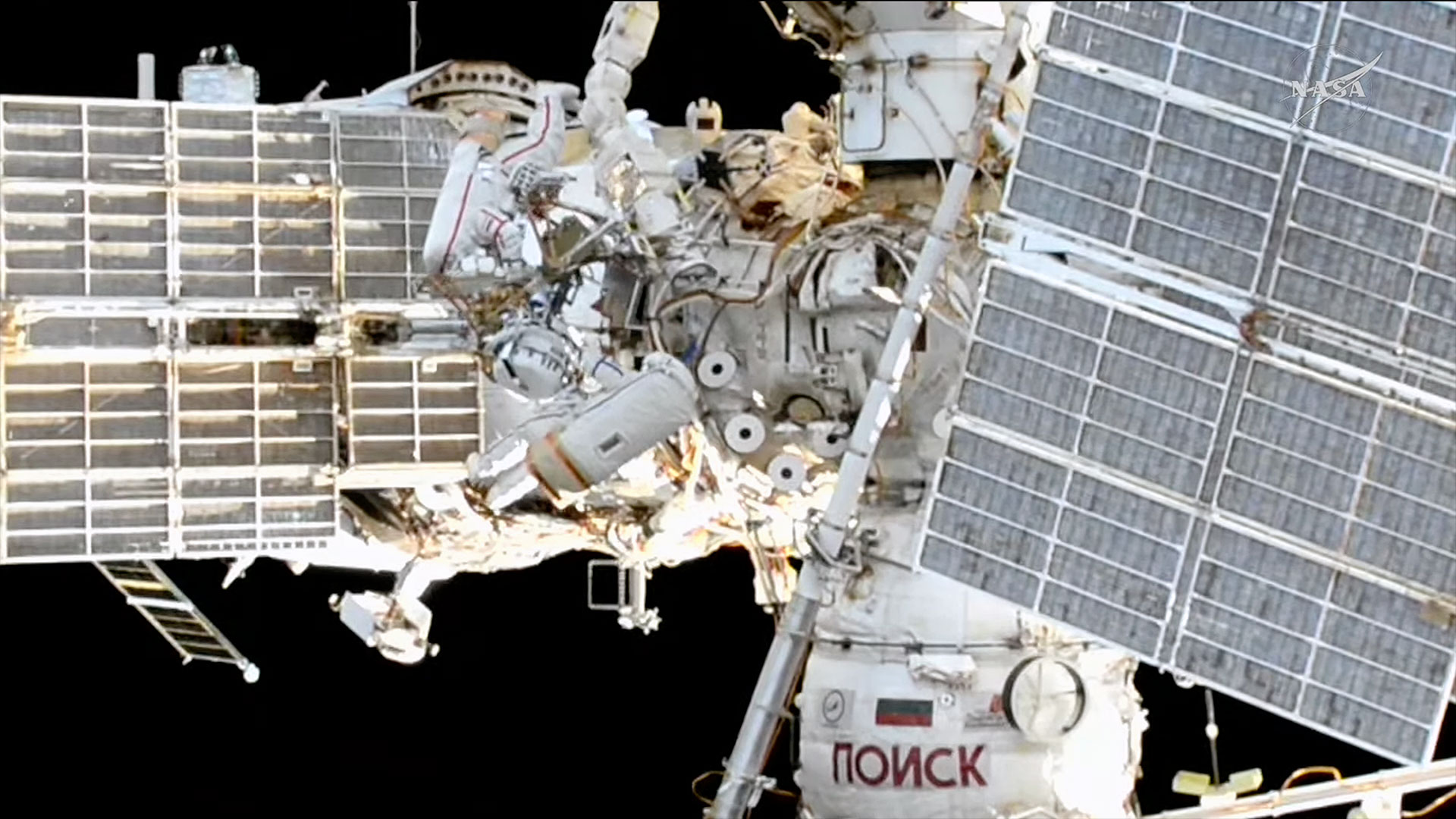Watch a Star Cluster Disappear Behind the Moon Tonight

The moon will pass in front of a star cluster tonight (March 12), and you can watch it happen.
As the moon moves around the Earth, it frequently passes in front of stars, causing what is called a lunar occultation. Because the moon has no significant atmosphere, stars that pass behind it wink out instantaneously, like a light switch being clicked off. Tonight, the moon will pass in front of not one star but hundreds of them. These stars form the open star cluster Messier 67.
Tonight, weather permitting, start watching the moon at about 9 p.m. EDT (0100 March 13 GMT). Over the next hour and a half, the moon will approach from the right and cover all of the stars in the cluster. Then, around 10:30, the stars will begin to reappear on the right side of the moon, all of them reappearing by midnight. [See amazing night sky photos for March 2014]
This event is best seen in binoculars or a small telescope. The best views will be in northeastern North America, as daylight will interfere further west, and the cluster won’t be completely covered further south.
Most people are unaware of how rapidly the moon moves across the sky.
The most obvious movement the moon appears to make is caused by the rotation of the Earth. Even this is only noticeable when the moon is very close to the horizon, rising or setting. Like the sun, the moon rises in the east and sets in the west, appearing to move from left to right across the sky, as seen from the Northern Hemisphere. Observers in the Southern Hemisphere see the moon move from right to left.
But that movement is largely an illusion caused by Earth's rotation. The moon itself is actually moving from right to left relative to the stars, or left to right as seen from the Southern Hemisphere. This slower movement takes the moon 27.3 days until it returns to the same spot in the sky, called the sidereal month.
Breaking space news, the latest updates on rocket launches, skywatching events and more!
This is most easily seen when the moon is moving past a star. It is even more striking when the moon moves in front of a large number of stars like Messier 67.
By and large, open clusters consist of young stars, newly formed. Messier 67 is an exception. It is one of the oldest open clusters in the sky, about the same age as our sun. Messier 67 is located 590 light-years from the sun.
This article was provided to Space.com bySimulation Curriculum, the leader in space science curriculum solutions and the makers of Starry Night and SkySafari. Follow Starry Night on Twitter @StarryNightEdu. Follow us @Spacedotcom, Facebookand Google+. Original article on Space.com.
Join our Space Forums to keep talking space on the latest missions, night sky and more! And if you have a news tip, correction or comment, let us know at: community@space.com.

Geoff Gaherty was Space.com's Night Sky columnist and in partnership with Starry Night software and a dedicated amateur astronomer who sought to share the wonders of the night sky with the world. Based in Canada, Geoff studied mathematics and physics at McGill University and earned a Ph.D. in anthropology from the University of Toronto, all while pursuing a passion for the night sky and serving as an astronomy communicator. He credited a partial solar eclipse observed in 1946 (at age 5) and his 1957 sighting of the Comet Arend-Roland as a teenager for sparking his interest in amateur astronomy. In 2008, Geoff won the Chant Medal from the Royal Astronomical Society of Canada, an award given to a Canadian amateur astronomer in recognition of their lifetime achievements. Sadly, Geoff passed away July 7, 2016 due to complications from a kidney transplant, but his legacy continues at Starry Night.


